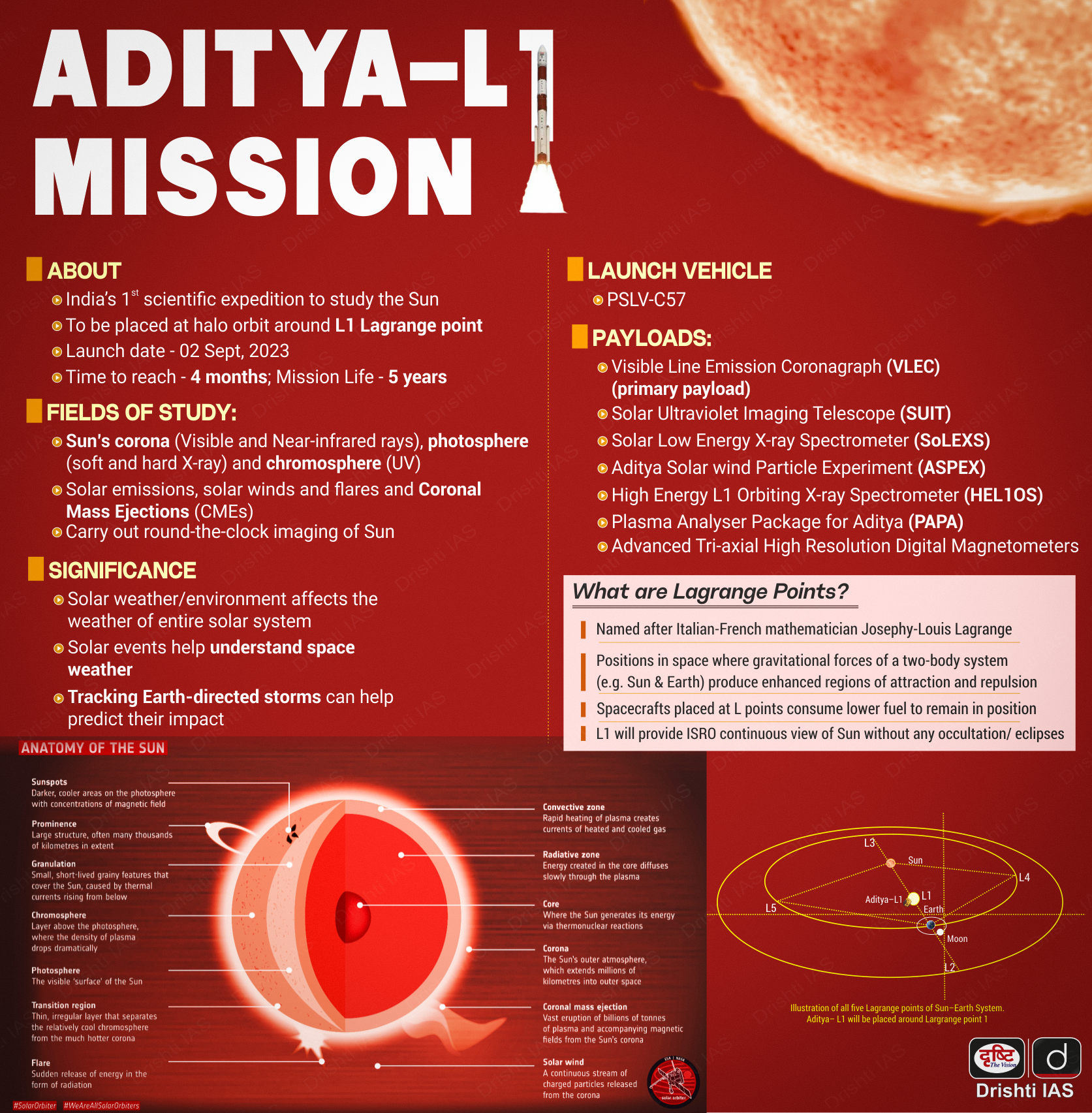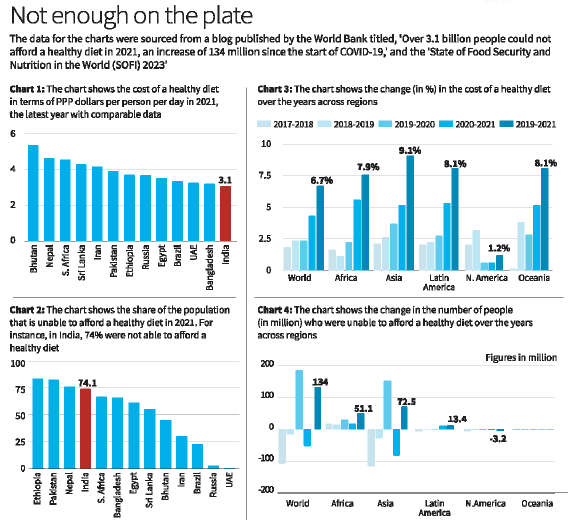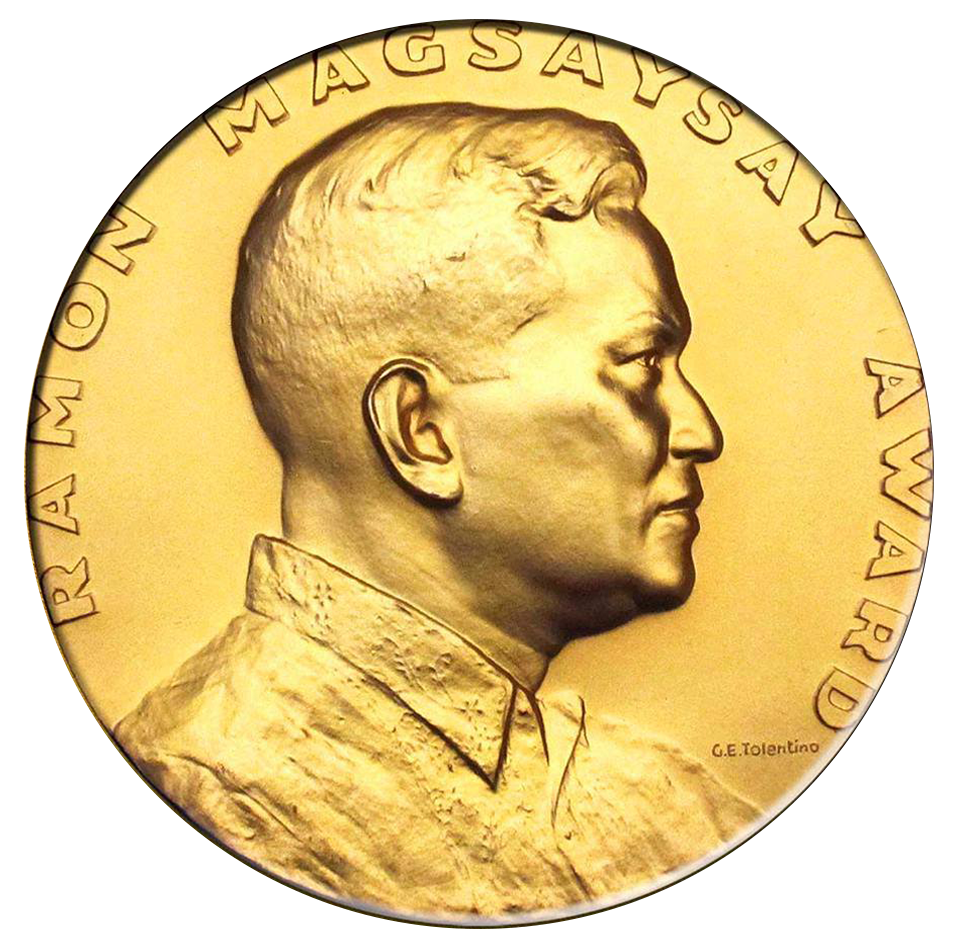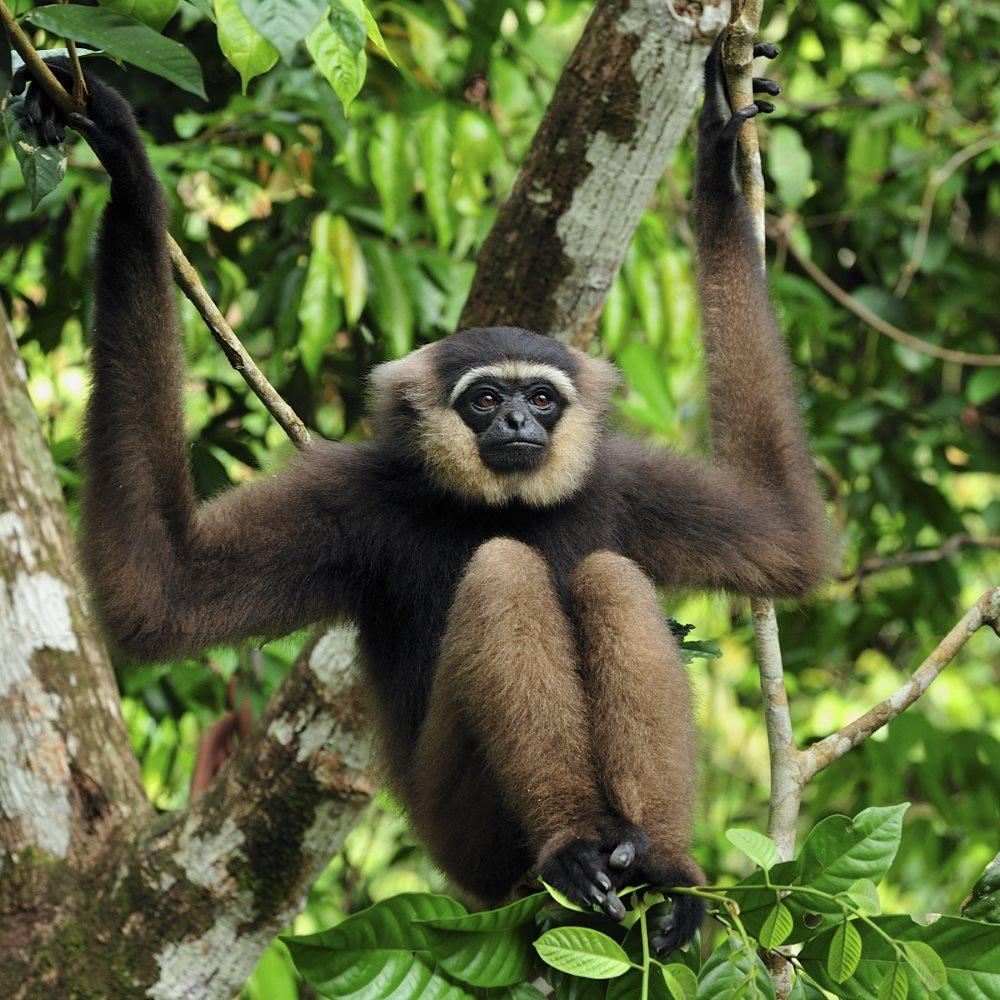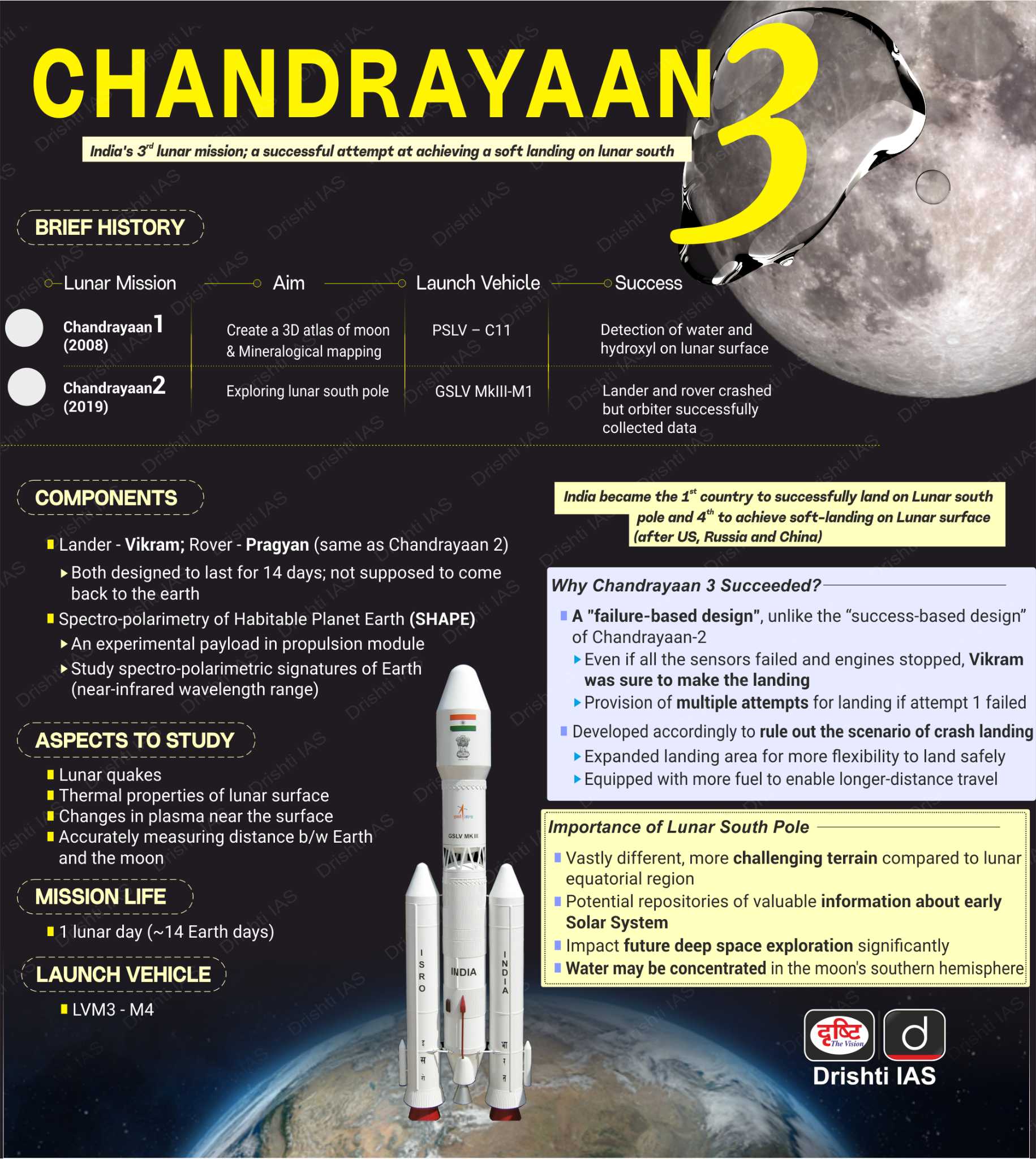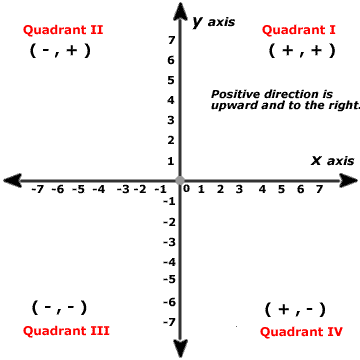Infographics
Social Justice
State of Food Security and Nutrition in the World (SOFI) 2023
For Prelims: United Nations Food and Agriculture Organization (FAO), BRICS nations, PPP dollars, Global Food Security Index 2022, Human Development Report 2021-22, Global Multidimensional Poverty Index MPI 2022, Global Food Security Index 2022, National Food Security Act (NFSA) 2013, Minimum Support Prices, Pradhan Mantri Fasal Bima Yojana (PMFBY), National Horticulture Mission, National Food Processing Mission
For Mains: Food Security & National Security, Food Security and related Issues.
Why in News?
‘State of Food Security and Nutrition in the World' (SOFI) 2023, a report by the United Nations Food and Agriculture Organization (FAO), has shed light on a concerning issue in India.
- It highlights the growing disparity between the cost of a nutritious meal and the economic realities faced by a significant portion of the Indian population.
What are the Key Highlights of the Report?
- Global Hunger: While global hunger numbers have remained stagnant between 2021 and 2022, the number of people facing hunger worldwide has increased by over 122 million since 2019 due to the pandemic, repeated weather shocks, and conflicts, including the war in Ukraine.
- Nutritional Access: Approximately 2.4 billion individuals, largely women, and residents of rural areas, did not have consistent access to nutritious, safe, and sufficient food in 2022.
- Child Malnutrition: Child malnutrition is still alarmingly high. In 2021, 22.3% (148.1 million) children were stunted, 6.8% (45 million) were wasted, and 5.6% (37 million) were overweight.
- Urbanization’s Impact on Diet: As urbanization accelerates, there is a noticeable increase in the consumption of processed and convenience foods, leading to a spike in overweight and obesity rates across urban, peri-urban, and rural areas.
- Rural Dependence on Global Markets: Previously self-sustaining rural regions, especially in Africa and Asia, are now found to be increasingly dependent on national and global food markets.
- Regional Trends: The SOFI report also tracks changes in the cost of a healthy diet and affordability across regions.
- Between 2019 and 2021, Asia witnessed the highest increase in the cost of maintaining a healthy diet, rising by almost 9%.
- The growth in the number of people unable to afford a nutritious diet was highest in Asia and Africa, with South Asia and Eastern and Western Africa facing the greatest challenges.
- South Asia's Struggle: South Asia, with 1.4 billion people, recorded the highest number (72%) of individuals unable to afford a healthy diet.
- Africa's Challenge: In Africa, Eastern and Western Africa were particularly affected, with 85% of the population unable to afford a healthy diet. These two continents (Asia and Africa) accounted for 92% of the global increase in this statistic, underscoring the severity of the issue on the African continent.
- Future Outlook: By 2050, it’s projected that 70% of the global population will reside in cities. This significant demographic shift necessitates a reorientation of food systems to cater to these new urban populations and eradicate hunger, food insecurity, and malnutrition.
What are the Key Highlights related to the Report on India?
- Cost of a Healthy Diet in India: According to the SOFI report, India has the lowest cost of a healthy diet among BRICS nations and its neighbours. In 2021, a healthy diet in India costs approximately 3.066 Purchasing Power Parity (PPP) per person per day, making it seemingly affordable on the surface.
- A diet is considered unaffordable if it costs more than 52% of a nation's average income. India has a low average income compared to other countries.
- This makes it difficult for a substantial portion of the population to afford the recommended diet.
- The Mumbai Case Study: The report also highlights a specific case study in Mumbai, where the cost of meals has risen by a staggering 65% in just five years. In contrast, salaries and wages have only increased by 28%-37% during the same period.
- Mumbai, chosen for its consistent data availability, serves as a stark example of the challenges faced by urban populations in India.
- Global Comparisons: Comparing India to other countries in the report, it becomes evident that while the cost of a healthy diet in India remains relatively low, it remains unattainable for a substantial portion of the population due to income disparities.
- In 2021, 74% of Indians could not afford a healthy diet, ranking India fourth among the nations considered.
Why is Ensuring Food Security Important for India?
- Meeting the Nutritional Needs of the Population:
- India is home to a significant population that is malnourished or undernourished, which affects their physical and mental growth.
- According to the Global Food Security Index 2022, India has a prevalence of undernutrition of 16.3%. Further, 30.9% of children in India are stunted, 33.4% are underweight, and 3.8% are obese.
- India is home to a significant population that is malnourished or undernourished, which affects their physical and mental growth.
- Supporting Economic Growth:
- Agriculture is a crucial sector that contributes significantly to India's economy. By ensuring food security, the government can support farmers and increase their income, which can help drive economic growth.
- With over 70% of the population engaged in agriculture-related activities, it is the backbone of India’s economy.
- Agriculture is a crucial sector that contributes significantly to India's economy. By ensuring food security, the government can support farmers and increase their income, which can help drive economic growth.
- Reducing Poverty:
- Food security can play a vital role in reducing poverty levels. By providing access to affordable and nutritious food, people can better manage their expenses, reduce their healthcare costs, and improve their overall quality of life.
- According to the Global Multidimensional Poverty Index MPI 2023, India still has more than 230 million people who are poor.
- Food security can play a vital role in reducing poverty levels. By providing access to affordable and nutritious food, people can better manage their expenses, reduce their healthcare costs, and improve their overall quality of life.
- Ensuring National Security:
- Food security is also essential for India's national security. A stable food supply can prevent social unrest and political instability, which can threaten national security.
- Combating Climate Change:
- Climate change poses a significant threat to India's food security. By adopting sustainable farming practices and investing in climate-resilient crops, India can better adapt to the changing climate and ensure food security for its population.
- The International Food Security Assessment for 2022-2032 indicates that India's large population has a significant impact on food insecurity trends. It is projected that around 333.5 million people will be affected in India during 2022-23.
- Climate change poses a significant threat to India's food security. By adopting sustainable farming practices and investing in climate-resilient crops, India can better adapt to the changing climate and ensure food security for its population.
What are the Related Initiatives Taken?
- National Food Security Act (NFSA) 2013
- National Food Security Mission
- National Agriculture Market (e-NAM) Platform
- National Food Processing Mission
- Other Policies:
What are the Challenges of Food Security in India?
- Inadequate Infrastructure:
- Inadequate infrastructure makes it difficult for farmers to transport their produce to the market and store them properly. This leads to high wastage and lower profits for farmers.
- Poor Agricultural Practices:
- Poor agricultural practices like over-cultivation, excessive use of pesticides, and improper irrigation techniques have led to decreased soil fertility and reduced crop yields.
- Extreme Weather Conditions:
- Inefficient Supply Chain Networks:
- Inefficient supply chain networks, including inadequate transportation, storage, and distribution facilities, also contribute to food insecurity in India. This leads to higher prices for consumers and lower profits for farmers.
- Fragmented Landholdings:
- Fragmented landholdings, where farmers own small and scattered plots of land, make it difficult to adopt modern farming practices and technologies. This, in turn, affects food production and availability.
Way Forward
- Investing in Agriculture Production Systems and Research:
- The government should invest in modern agricultural research to increase agricultural production.
- Improving Storage Facilities and Transportation Networks:
- The government should develop adequate storage facilities to prevent post-harvest losses and robust transportation networks for distributing food products across the country to ensure supply-demand balance.
- Promoting Public-Private Partnerships:
- The government should promote partnerships between the public and private sectors to improve agricultural productivity and food availability.
- Encouraging Sustainable Agriculture Practices:
- The government should promote sustainable agriculture practices that preserve soil health and reduce the use of harmful pesticides and fertilizers.
UPSC Civil Services Examination Previous Year Question (PYQ)
Prelims
Q. As regards the use of international food safety standards as reference point for the dispute settlements, which one of the following does WTO collaborate with? (2010)
(a) Codex Alimentarius Commission
(b) International Federation of Standards Users
(c) International Organization for Standardization
(d) World Standards Cooperation
Ans: (a)
- The Codex Alimentarius, or “Food Code“ is a collection of standards, guidelines and codes of practice adopted by the Codex Alimentarius Commission.
- The Commission is the central part of the Joint FAO/WHO Food Standards Programme and was established by FAO and WHO to protect consumer health and promote fair practices in food trade.
Q.2 The FAO accords the status of ‘Globally Important Agricultural Heritage System (GIAHS)’ to traditional agricultural systems. What is the overall goal of this initiative? (2016)
- To provide modern technology, training in modern farming methods and financial support to local communities of identified GIAHS so as to greatly enhance their agricultural productivity.
- To identify and safeguard eco-friendly traditional farm practices and their associated landscapes, agricultural biodiversity and knowledge systems of the local communities.
- To provide Geographical Indication status to all the varieties of agricultural produce in such identified GIAHS.
Select the correct answer using the code given below:
(a) 1 and 3 only
(b) 2 only
(c) 2 and 3 only
(d) 1, 2 and 3
Ans: (b)
Mains
Q. How far do you agree with the view that the focus on lack of availability of food asthe main cause of hunger takes the attention away from ineffective human development policies in India? (2018)


Governance
Nine Years of Pradhan Mantri Jan Dhan Yojana
For Prelims: Pradhan Mantri Jan Dhan Yojana, Direct Benefit Transfer (DBT), Pradhan Mantri Jeevan Jyoti Bima Yojana (PMJJBY), Pradhan Mantri Suraksha Bima Yojana (PMSBY), Atal Pension Yojana (APY), National Centre for Financial Education (NCFE), Unified Payments Interface, Micro Units Development and Refinance Agency (MUDRA), Small Finance Banks (SFBs)
For Mains: Features and Significance of PMJDY.
Why in News?
The Pradhan Mantri Jan Dhan Yojana (PMJDY) has successfully completed nine years of implementation.
- It was launched on August 28, 2014 and stands as one of the largest financial inclusion initiatives globally, led by the Ministry of Finance to provide affordable financial services to vulnerable and economically disadvantaged sections.
What is Pradhan Mantri Jan Dhan Yojana?
- About:
- PMJDY creates a platform for universal access to banking facilities with at least one basic banking account for every household, financial literacy, and access to credit, insurance, and pension facilities.
- Features of PMJDY:
- It aims to expand banking services through branches and Banking Correspondents (BCs).
- It covers both urban and rural areas and those who open an account would get indigenous Debit Card (RuPay card).
- There is no requirement to maintain any minimum balance in PMJDY accounts.
- Accident Insurance Cover of Rs.1 lakh (enhanced to Rs. 2 lakh to new PMJDY accounts opened after 28.8.2018) is available with RuPay card issued to the PMJDY account holders.
- It provides an overdraft facility of Rs. 10,000 to every eligible adult.
- PMJDY accounts are eligible for Direct Benefit Transfer (DBT), Pradhan Mantri Jeevan Jyoti Bima Yojana (PMJJBY), Pradhan Mantri Suraksha Bima Yojana (PMSBY) and Atal Pension Yojana (APY).
- It aims to expand banking services through branches and Banking Correspondents (BCs).
Note: An overdraft allows individuals to withdraw money from their bank account even if they have an insufficient balance. Overdrafts are primarily intended to be used for covering immediate, short-term expenses.
- Significance:
- Promoting Equitable Growth: PMJDY fosters Financial Inclusion (FI), leading to inclusive growth through the provision of affordable financial services to low-income and disadvantaged segments of the population.
- The Jan Dhan–Aadhaar–Mobile (JAM) architecture has enabled seamless transfer of government benefits to common citizens' accounts.
- Bringing Savings to Formal Systems: PMJDY has brought the savings of the poor into the formal financial system, freeing them from usurious money lenders.
- Empowering Women: Approximately 55.5% of Jan Dhan accounts belong to women, promoting financial empowerment.
- Overdraft is available in only one account per household, preferably lady of the household.
- Promoting Equitable Growth: PMJDY fosters Financial Inclusion (FI), leading to inclusive growth through the provision of affordable financial services to low-income and disadvantaged segments of the population.
- Achievements:
- More than 50 crore people have been included in the formal banking system through Jan Dhan accounts.
- Approximately 67% of these accounts have been opened in rural and semi-urban areas.
- Around 34 crore RuPay cards have been issued to these accounts, providing ₹2 lakh accident insurance cover.
- Guinness World Records has acknowledged the PMJDY's success, certifying that the "Most bank accounts opened in one week as part of the Financial Inclusion Campaign is 18,096,130 and was achieved by the Department of Financial Services, Government of India."
- More than 50 crore people have been included in the formal banking system through Jan Dhan accounts.
What are the Other Government Initiatives to Promote Financial Inclusion in India?
UPSC Civil Services Examination, Previous Year Question (PYQ)
Prelims
Q. ‘Pradhan Mantri Jan-Dhan Yojana’ has been launched for (2015)
(a) providing housing loan to poor people at cheaper interest rates
(b) promoting women’s Self-Help Groups in backward areas
(c) promoting financial inclusion in the country
(d) providing financial help to the marginalized communities
Ans: (c)
Mains
Q. Pradhan Mantri Jan Dhan Yojana (PMJDY) is necessary for bringing unbanked to the institutional finance fold. Do you agree with this for financial inclusion of the poorer section of the Indian society? Give arguments to justify your opinion. (2016)

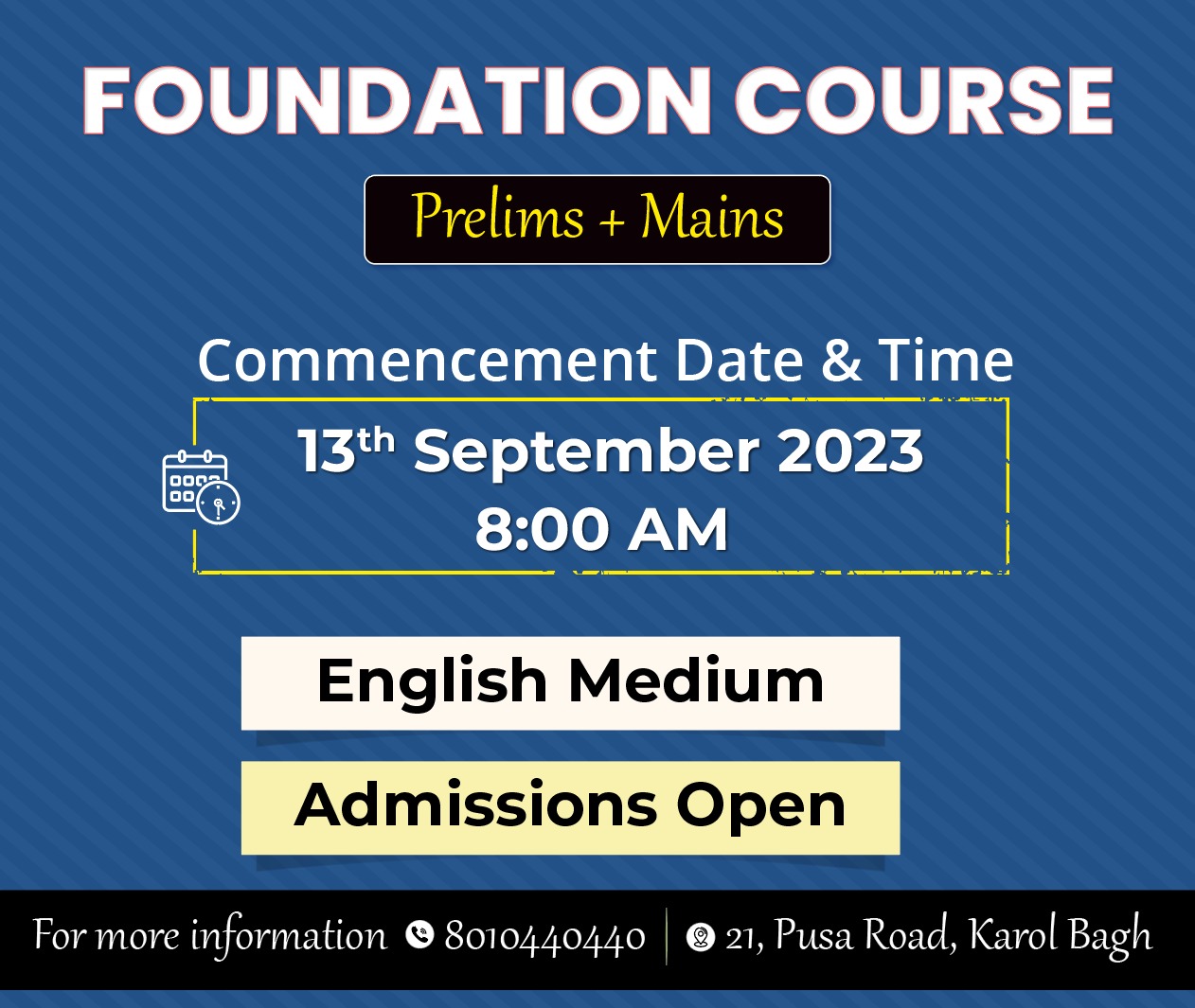
Agriculture
Minimum Export Price for Rice
For Prelims: Minimum Export Price for Rice, Agriculture, Export, Food Inflation.
For Mains: Minimum Export Price for Rice.
Why in News?
India’s production of both rice and wheat hit all-time highs in 2022, according to the Ministry of Agriculture and Farmers Welfare, yet the agricultural landscape has seen a wave of supply-side actions in the form of export restrictions and trade controls.
- The government set a Minimum Export Price (MEP) of USD 1,200 a tonne on basmati rice shipments in a move aimed at reining in domestic prices.
What Recent Measures has the Government taken to Curb the Export of Rice and Wheat?
- In May 2022, the government imposed a ban on the export of wheat.
- Prohibited the exports of broken rice and imposed a 20% duty on all white (non-parboiled) non-basmati grain shipments in September, 2022.
- In July 2023, the government banned exports of white non-basmati rice, allowing only parboiled non-basmati and basmati rice exports.
- In August 2023, a 20% duty was introduced on all parboiled non-basmati rice exports "with immediate effect." This duty was implemented to curb the export of this type of rice.
- In August, 2023, the government directed the Agricultural & Processed Food Products Exports Development Authority (APEDA) not to issue registration-cum-allocation certificates for any basmati rice consignments contracted at a price of USD 1,200 per tonne.
- This MEP was imposed to prevent illegal exports of white non-basmati rice disguised as basmati rice.
What is the Production of Rice and Wheat?
- Rice Production:
- Rice production escalated from 124.37 million tonnes (mt) in 2020-21 to 129.47 mt in 2021-22, further reaching 135.54 mt in 2022-23.
- However, counterintuitively, the government undertook Export curbs on rice.
- These measures included the prohibition of broken rice exports and the imposition of a 20% duty on white non-basmati grain shipments.:
- Varied Wheat Production:
- Wheat production initially fell from 109.59 mt to 107.74 mt, rebounded to 112.74 mt in 2022-23.
- The government introduced bans on wheat exports, reflecting its intention to manage domestic availability.
What are the Factors Influencing Export Restrictions?
- Despite record production, retail Food Inflation and open market prices surged.
- Retail rice and wheat prices increased considerably, prompting the government to intervene to stabilise domestic prices.
- The government's measures are aimed at reducing or halting exports to bolster domestic grain availability and mitigate rising food inflation.
- Asian rice prices surged to a nearly 15-year high in August 2023, driven by rising demand, production disruptions in major growers such as Thailand, and fears of possible adverse effects of El Nino.
What are the Challenges and Impacts of Export Controls?
- Selective controls such as the ones imposed on rice are prone to evasion through misclassification.
- For instance, white non-basmati rice was exported under the codes of parboiled and basmati rice.
- Despite the export restrictions, open market prices remained high, indicating that these measures did not lead to the anticipated decline in prices.
What can be done to Streamline Exports and Stabilise Prices?
- Experts suggest implementing a uniform MEP (Minimum Export Prices) for all types of rice, regardless of whether it is basmati, parboiled (Partially Boiled), or non-basmati. This approach could help streamline exports and stabilise prices.
- MEP is a price limit or floor price set by a government on certain exportable commodities or products. It is the minimum price at which these commodities can be exported from the country.
- A uniform MEP, set at an appropriate level such as USD 800 per tonne, could encourage the export of various premium rice varieties, benefiting both producers and the government's goal of maintaining domestic food security.
What are the Key Facts About Rice and Wheat?
- Rice:
- Rice is a staple food for most of the population in India.
- It is a kharif crop which requires high temperature (above 25°C) and high humidity with annual rainfall above 100 cm.
- In the areas of less rainfall, it is grown with the help of irrigation.
- In southern states and West Bengal, the climatic conditions allow the cultivation of two or three crops of rice in an agricultural year.
- In West Bengal farmers grow three crops of rice called ‘aus’, ‘aman’ and ‘boro’.
- About one-fourth of the total cropped area in India is under rice cultivation.
- Leading Producer States: West Bengal, Uttar Pradesh, and Punjab.
- High Yielding States: Punjab, Tamil Nadu, Haryana, Andhra Pradesh, Telangana, West Bengal and Kerala.
- India is the second-largest producer of rice after China.
- Wheat:
- This is the second most important cereal crop in India after rice.
- It is the main food crop, in north and north-western part of the country. Wheat is a rabi crop that requires a cool growing season and bright sunshine at the time of ripening.
- Success of the Green Revolution contributed to the growth of Rabi crops, especially wheat.
- Macro Management Mode of Agriculture, National Food Security Mission and Rashtriya Krishi Vikas Yojana are few government initiatives to support wheat cultivation.
- Temperature: Between 10-15°C (Sowing time) and 21-26°C (Ripening & Harvesting) with bright sunlight. Rainfall: Around 75-100 cm.
- Soil Type: Well-drained fertile loamy and clayey loamy (Ganga-Satluj plains and black soil region of the Deccan).
- Top Wheat Producing States: Uttar Pradesh , Madhya Pradesh, Punjab , Haryana, Rajasthan, Bihar, Gujarat.
UPSC Civil Services Examination, Previous Year Question (PYQ)
Q. Among the following, which one is the largest exporter of rice in the world in the last five years? (2019)
(a) China
(b) India
(c) Myanmar
(d) Vietnam
Ans: (b)


Indian Polity
Supreme Court Judgment on Inheritance
For Prelims: Supreme Court Judgment on Inheritance, Mitakshara Law, Voidable Marriage, Void Marriage, Hindu Marriage Act, 1955, Hindu Undivided Family (HUF), Dayabhaga School.
For Mains: Supreme Court Judgment on Inheritance.
Why in News?
Recently, the Supreme Court (SC) has ruled that children born of void or voidable marriages can inherit their parent's share in a joint Hindu family property under the Mitakshara Law.
- However, it emphasized that these children would not be entitled to rights in or to the property of any other person in the family.
Note:
- Voidable Marriage: A voidable marriage is a marriage that is initially valid but has certain defects or conditions that can lead to its annulment if one of the parties chooses to do so.
- Void Marriage: A void marriage is one that is considered invalid from the very beginning as if it never existed in the eyes of the law.
What is the Background?
- The verdict was given in reference to a two-judge bench judgment in Revanasiddappa vs. Mallikarjun, 2011, which had held that children born out of void/voidable marriages are entitled to inherit their parents' property, whether self-acquired or ancestral.
- The case was related to an amended provision in the Hindu Marriage Act, 1955 Section 16(3).
- This judgment laid the foundation for recognizing the inheritance rights of such children.
What are the SC’s Ruling?
- Determining Inheritance Share:
- The first step in inheritance for a child from a void or voidable marriage is to ascertain the exact share of their parent in the ancestral property.
- This determination involves conducting a "notional partition" of the ancestral property to calculate the portion that the parent would have received immediately before their death.
- Legal Basis for Inheritance:
- Section 16 of the Hindu Marriage Act, 1955 plays a crucial role in conferring legitimacy to children born out of void or voidable marriages, stipulating that such children have a right to their parents' property.
- Equal Inheritance Rights:
- Children from void or voidable marriages are considered "legitimate kin" under the Hindu Succession Act, 1956 which governs inheritance.
- They cannot be deemed illegitimate when it comes to inheriting family property.
- Impact of the Hindu Succession (Amendment) Act, 2005:
- The court noted that after the enactment of the Hindu Succession (Amendment) Act in 2005, a deceased person's share in a joint Hindu family governed by Mitakshara law can be inherited by testamentary or intestate succession.
- This amendment expanded the scope of inheritance beyond survivorship and granted equal succession rights to women and men.
Note: In June 2022, the SC in Kattukandi Edathil Krishnan & Another Vs Kattukandi Edathil Valsan & Others ruled that children born to partners in live-in relationships can be considered legitimate. This is conditional in a way that the relationship needs to be long-term and not of ‘walk in, walk out’ nature.
What are the Supreme Court Rulings Regarding Daughter's Inheritance?
- Arunachala Gounder v. Ponnusamy, 2022:
- The SC held that the self-acquired property of a Hindu male dying intestate i.e., without writing a will, would devolve by inheritance and not by succession.
- Further, the Court said that such property shall be inherited by the daughter, in addition to the property of the coparcenary which was obtained through partition.
- Vineeta Sharma v. Rakesh Sharma, 2020
- The SC held that a woman/daughter shall also be considered as a joint legal heir as a son and can inherit ancestral property equally as a male heir, irrespective that the father was not alive before the Hindu Succession (Amendment) Act, 2005, came into effect.
What is Mitakshara Law?
- About:
- The Mitakshara Law is a legal and traditional Hindu law system that primarily governs the rules of inheritance and property rights among members of a Hindu Undivided Family (HUF).
- It is one of the two major schools of Hindu law, the other being the Dayabhaga school.
- The Mitakshara law of succession applies to the entire country except West Bengal and Assam.
- The Mitakshara Law is a legal and traditional Hindu law system that primarily governs the rules of inheritance and property rights among members of a Hindu Undivided Family (HUF).
| Schools of Hindu Laws | |
| Mitakshara Law School | Dayabhaga Law School |
| The term Mitakshara is derived from the name of a commentary written by Vijnaneswara, on the Yajnavalkya Smriti. | The term Dayabhaga is derived from a similarly named text written by Jimutavahana. |
|
It is observed in all parts of India and subdivided into the Benares, the Mithila, the Maharashtra, and the Dravida schools. |
It is observed in Bengal and Assam. |
| A son, by birth, acquires an interest in the ancestral property of the joint family. | A son has no automatic ownership right by birth but acquires it on the death of his father. |
| All the members enjoy coparcenary rights during the father’s lifetime. | Sons do not enjoy coparcenary rights when the father is alive. |
| A coparcener’s share is not defined and cannot be disposed of. | The share of each coparcener is defined and can be disposed of. |
| A wife cannot demand partition but has the right to a share in any partition between her husband and her sons. | Here, the same right does not exist for the women because the sons cannot demand partition as the father is the absolute owner. |
UPSC Civil Services Examination, Previous Year Question (PYQ)
Prelims
Q. With reference to the history of ancient India, which of the following statements is/are correct?
- Mitakshara was the civil law for upper castes and Dayabhaga was the civil law for lower castes.
- In the Mitakshara system, the sons can claim right to the property during the lifetime of the father, whereas in the Dayabhaga system, it is only after the death of the father that the sons can claim right to the property.
- The Mitakshara system deals with the matters related to the property held by male members only of a family, whereas the Dayabhaga system deals with the matters related to the property held by both male and female members of a family.
Select the correct answer using the code given below:
(a) 1 and 2 only
(b) 2 only
(c) 1 and 3 only
(d) 3 only
Ans: (b)
- Mitakshara and Dayabhaga terms were used to denote regions. It is not related to the caste system. The Mitakshara Law applies to the whole of India except Bengal and Assam. The Dayabhaga Law applies to the communities living in the states of Bengal and Assam and other parts of the world. Hence, statement 1 is not correct.
- The difference between Dayabhaga and Mitakshara is in the basic idea of them. Dayabhaga does not give anyone the right to property before the death of their forefathers whereas Mitakshara gives anyone the right to property just after their birth. Hence, statement 2 is correct.
- Dayabhaga system prevails in West Bengal and allows both the male and female members of the family to be coparceners. Mitakshara system, on the other hand, prevails all over India except West Bengal and allows only the male members to be coparceners. Hence, statement 3 is not correct.
- Therefore, option (b) is the correct answer.


Indian Economy
Governance in Urban Cooperative Banks
For Prelims: Reserve Bank of India (RBI), Urban Cooperative Banks, Non-Performing Assets
For Mains: Features of Cooperative Banks and Challenges
Why in News?
Recently, the Governor of the Reserve Bank of India (RBI) addressed concerns regarding Urban Cooperative Banks (UCBs) and emphasized the need to bolster their governance.
- While the UCB sector has shown overall financial improvement, individual entities face vulnerabilities that must be addressed to ensure the sector’s stability.
What are the Concerns Regarding Urban Cooperative Banks (UCBs)?
- Financial Vulnerabilities:
- Some urban cooperative banks (UCBs) face financial vulnerabilities, such as low capitalization, high levels of non-performing assets (NPAs), or insufficient reserves, which indicate potential instability.
- Governance Issues:
- Inadequate robust governance practices can hinder a UCB's overall performance and integrity.
- Poor governance may lead to mismanagement, non-compliance, or ethical concerns within the bank.
- Compliance Challenges:
- Compliance issues suggest that certain UCBs may struggle to meet regulatory and legal requirements.
- Non-compliance can result in penalties, legal issues, and reputational damage.
- Risk Management:
- Concerns exist about the ability of some UCBs to effectively identify, assess, and manage various risks.
- Risk management deficiencies can lead to unexpected financial losses or operational disruptions.
- Credit Risk:
- UCBs may need to improve credit risk management practices. This includes issues related to loan underwriting standards, monitoring of borrower performance, and handling non-performing loans.
- Liquidity Risk:
- Inadequate liquidity management can lead to difficulties in meeting financial obligations.
- Concerns exist about the ability of some UCBs to effectively identify, assess, and manage various risks.
- IT Infrastructure and Cybersecurity:
- UCBs must establish robust IT infrastructure and cybersecurity measures to protect sensitive data and systems.
What are the RBI’s Recommendations for UCBs?
- The RBI directed the directors of UCBs to strengthen their governance practices, especially the three supporting pillars of compliance, risk management, and internal audit.
- The RBI urged the boards to be more proactive in Asset Liability Management and the necessity of managing liquidity risk in a more systematic manner.
- On the functioning of the boards, the RBI emphasised five aspects - adequate skills and expertise of directors, the constitution of a professional board of management, diversity, and tenure of board members, transparent and participatory nature of board discussions, and effective functioning of board-level Committees.
- The RBI cautioned them against using innovative accounting practices to camouflage their actual financial position.
- The RBI encouraged them to adopt appropriate business strategies and explore suitable technology solutions to sustain and grow their business and serve their customers.
What are Urban Cooperative Banks (UCBs)?
- Co-operative Banks, which are distinct from commercial banks, were born out of the concept of co-operative credit societies where members from a community group together to extend loans to each other, at favorable terms.
- Co-operative Banks are broadly classified into Urban and Rural co-operative banks based on their region of operation.
- UCBs are regulated and supervised by State Registrars of Co-operative Societies (RCS) in case of single-state co-operative banks and Central Registrar of Co-operative Societies (CRCS) in case of multi-state co-operative banks and by the RBI.
- But in 2020, all UCBs and multi-state cooperatives were brought under the supervision of RBI.
- In 2021 RBI appointed a committee that suggested a 4-tier structure for the UCBs.
- Tier 1 with all unit UCBs and salary earner’s UCBs (irrespective of deposit size) and all other UCBs having deposits up to Rs 100 crore.
- Tier 2 with UCBs of deposits between Rs 100 crore and Rs 1,000 crore,
- Tier 3 with UCBs of deposits between Rs 1,000 crore and Rs 10,000 crore, and
- Tier 4 with UCBs of deposits more than Rs 10,000 crore.
- As of March 2021, there are about 1,539 UCBs in India. The deposit base of UCBs stood at Rs 5 lakh crore as of March 2020 and advances over Rs 3 Lakh crore.
- Despite their large numbers, UCBs' market share in the banking sector was low and declining at around 3%. They accounted for 3.24% of deposits and 2.69% of advances.
UPSC Civil Services Examination, Previous Year Question (PYQ)
Prelims:
Q. With reference to ‘Urban Cooperative Banks’ in India, consider the following statements:
- They are supervised and regulated by local boards set up by the State Governments.
- They can issue equity shares and preference shares.
- They were brought under the purview of the Banking Regulation Act, 1949 through an Amendment in 1966.
Which of the statements given above is/are correct?
(a) 1 only
(b) 2 and 3 only
(c) 1 and 3 only
(d) 1, 2 and 3
Ans: (b)
Exp:
- Co-operative banks are financial entities which belong to its members, who are at the same time the owners and the customers of their bank. They are established by State laws.
- Co-operative banks in India are registered under the Cooperative Societies Act. They are also regulated by the RBI and governed by Banking Regulations Act, 1949 and Banking Laws (Co-operative Societies) Act, 1955.
- Cooperative banks lend as well as accept deposits. They are established with the aim of funding agriculture and allied activities and financing village and cottage industries. National Bank for Agriculture and Rural Development (NABARD) is the apex body of cooperative banks in India.
- Urban Co-operative Banks (UCB) are regulated and supervised by State Registrars of Co-operative Societies (RCS) in case of single-state co-operative banks and Central Registrar of Co-operative Societies (CRCS) in case of multi-state co-operative banks and by the RBI. Hence, statement 1 is not correct.
- The banking related functions such as issue of license to start new banks/branches, matters relating to interest rates, loan policies, investments and prudential exposure norms are regulated and supervised by the Reserve Bank under the provisions of the Banking Regulation Act, 1949 after an amendment in 1966. Hence, statement 3 is correct.
- The Reserve Bank of India came out with draft guidelines allowing primary UCBs to augment capital through issuance of equity shares, preference shares and debt instruments.
- The UCBs could raise share capital by issue of equity to persons within their area of operation enrolled as members and also through additional equity shares to the existing members. Hence, statement 2 is correct. Therefore, option (b) is the correct answer.


Important Facts For Prelims
R. Ravi Kannan Wins Ramon Magsaysay Award 2023
Why in News?
Recently, Surgical oncologist Padma Shri Dr R. Ravi Kannan, Director of the Cachar Cancer Hospital and Research Centre (CCHRC) in Assam, received the prestigious Ramon Magsaysay Award for 2023.
- He won the award for revolutionising the treatment of cancer in Assam through his people-centered and pro-poor programmes (offering free treatment, food, lodging, and employment for caregivers).
What are the Key Facts About the Ramon Magsaysay Award?
- About:
- Established in 1957 as Asia's highest honour and premier prize.
- It celebrates individuals who demonstrate exceptional spirit in serving the people of Asia, regardless of their background.
- The award is presented annually on August 31st, which coincides with the birthday of Ramon Magsaysay, the third president of the Republic of the Philippines, who inspired its creation.
- Awardees are presented with a certificate, a medallion with an embossed image of Ramon Magsaysay and a cash prize.
- The award is internationally recognised as the Nobel Prize counterpart of Asia.
- Categories of Recognition:
- The award initially featured six categories, including “Government Service”, “Public Service”, “Community Leadership”, “Journalism, Literature, and Creative Communication Arts”, “Peace and International Understanding”, and “Emergent Leadership”.
- However, post-2009, the Ramon Magsaysay Award is no longer being given in fixed Award categories, except for Emergent Leadership.


Important Facts For Prelims
Hollongapar Gibbon Sanctuary
Why in News?
Primatologists have suggested rerouting a 1.65-km-long railway track that has divided the Hollongapar Gibbon Sanctuary, in eastern Assam dedicated to the western hoolock gibbon into two unequal parts.
What are the Key Facts About Hoolock Gibbons?
- About:
- Hoolock Gibbons, known as the smallest and fastest of all apes, inhabit tropical and subtropical forests in Southeast Asia.
- They have high intelligence, distinct personalities, and strong family bonds similar to other apes.
- They represent one of the 20 gibbon species found worldwide.
- Hoolock Gibbons are India's only ape species.
- Gibbon Species in India:
- Western Hoolock Gibbon (Hoolock hoolock):
- It inhibits in all the states of the north-east, restricted between the south of the Brahmaputra River and east of the Dibang River. Outside India, it is found in eastern Bangladesh and north-west Myanmar.
- International Union for Conservation of Nature's Red List (IUCN): Endangered
- Eastern Hoolock Gibbon (Hoolock leuconedys):
- It inhabits specific pockets of Arunachal Pradesh and Assam in India, and in southern China and north-east Myanmar outside India.
- IUCN Red List: Vulnerable
- In India, both species are listed on Schedule 1 of the Indian (Wildlife) Protection Act 1972.
- Western Hoolock Gibbon (Hoolock hoolock):
- Characteristics:
- They are known for their distinct white eyebrows, long arms, and a throat sac used for vocalizations.
- Arboreal Lifestyle:
- Gibbons are exclusively arboreal, spending their lives in the treetops of tropical forests.
- Challenges:
- Hoolock gibbons are particularly sensitive to habitat disruptions, such as canopy gaps.
- Fragmentation of their habitat can lead to genetic isolation and threaten their populations.
- Conservation Efforts:
- Initiatives like artificial canopy bridges aim to facilitate their movement and preserve genetic diversity.
- Gibbons play a vital role in forest ecosystems by dispersing seeds as they travel through the canopy.
- Their conservation is essential for maintaining the health and biodiversity of their habitats.
Gibbon Sanctuary:
- Hoollongapar Gibbon Sanctuary, formerly known as Gibbon Wildlife Sanctuary, is located in Assam's Jorhat district, India.
- Established in 1997, it boasts a rich biodiversity, housing India's only gibbons, the western Hoolock hoolock, and the Bengal slow loris, the sole nocturnal primate in Northeastern India.
UPSC Civil Services Examination, Previous Year Questions (PYQs)
Q. Consider the following pairs: (2010)
| Protected area | Well-known for |
| Bhiterkanika, Orissa | Salt Water Crocodile |
| Desert National Park, Rajasthan | Great Indian Bustard |
| Eravikulam, Kerala | Hoolock Gibbon |
Which of the pairs given above is/are correctly matched?
(a) 1 only
(b) 1 and 2 only
(c) 2 only
(d) 1, 2 and 3
Ans: (b)
Q. Among the following, which one is not an ape? (2008)
(a) Gibbon
(b) Gorilla
(c) Langur
(d) Orangutan
Ans: C
- Apes (Hominoidea) are a branch of Old World tailless simians native to Africa and Southeast Asia. They are divided into Greater Apes and Lesser Apes. The Greater Apes family is Hominidae, with subfamily comprising of gorillas, hominoids and chimps, whereas Lesser Apes belong to family of Hylobatidae.
- For example, Bonobos, Pygmy Chimpanzee, Gibbon, Orangutan etc.
- Monkeys and apes are both primates, which means they both are parts of the human family tree. The quickest way to tell the difference between a monkey and an ape is by the presence or absence of a tail. Almost all monkeys have tails, but apes do not.
- Their bodies are different in other ways too – monkeys are generally smaller and narrow-chested, while apes are larger and have broad chests and shoulder joints that allow them to swing through trees.
- Gray langurs or Indian langurs are a group of Old World monkeys native to the Indian subcontinent constituting the entirety of the genus Semnopithecus. Gray langurs are fairly terrestrial, inhabiting forests, open light wooded habitats, and urban areas of the Indian subcontinent.
- Most species are found at low to moderate altitudes, but the Nepal gray langur and Kashmir gray langur are found up to 4,000 m in the Himalayas.
- Therefore, option (c) is the correct answer.


Rapid Fire
Rapid Fire Current Affairs
Prayan Rover Completes Tasks and Enters Sleep Mode
- Pragyan, part of Chandrayaan-3, has entered sleep mode for the lunar night, scheduled to awaken on September 22, 2023.
- One lunar day is equivalent to about 14 days on Earth.
- If the rover doesn't awaken, it will remain on the Moon as India's lunar ambassador.
- The ISRO indicated that the process of putting the rover to sleep is to ensure its survival during the lunar night when temperatures can plummet below -200°C.
- The lander and rover rely on a solar panel to generate power and charge the battery during the lunar day, while they must endure the harsh lunar night conditions.
Read more: Chandrayaan-3 Successfully Lands on Moon's South Pole
Karnataka Takes Steps to Address Dementia
- Karnataka is committed to prioritizing dementia as a health concern.
- Dementia is an umbrella term encompassing diseases that affect memory, cognitive abilities, and behaviour, hindering daily activities. Alzheimer's disease is the most common type of dementia.
- Recent estimates indicate a 7.4% dementia prevalence rate among Indians aged 60 and above, totaling approximately 9 lakh individuals. This number is expected to surge from 88 lakh in 2016 to 1.7 crore by 2036.
- Risk factors for dementia include smoking, excessive alcohol consumption, physical inactivity, social isolation, head injuries, and conditions like diabetes, hearing loss, depression, obesity, and hypertension.
Read more: Dementia , Alzheimer Disease
Significance of Cartesian Coordinates in Modern Geometry
The Cartesian coordinate system, introduced by the French philosopher and mathematician Rene Descartes, revolutionized the way we represent points in space.
- This system utilizes sets of numbers to specify the location of a point in relation to perpendicular planes.
- In two dimensions, it relies on a pair of numbers (x and y) to pinpoint a specific location on a plane, akin to how latitude and longitude locate a city on Google Maps.
- For three-dimensional spaces, a third number (z) is added to determine the point's exact position.
- It has not only bridged the gap between algebra and geometry but also gave birth to analytic geometry and found widespread applications in fields like astronomy, engineering, computer graphics, and spatial data representation.
Shared Neural Mechanisms in Spatial Navigation and Social Interaction in Bats
Recent research reveals the neural processes underlying both spatial navigation and social interaction in Egyptian fruit bats.
- These mammals, along with humans and various other species, rely on the hippocampus (a part of the brain) to navigate their surroundings, forming a mental 'map.'
- This study revealed that bats establish resting spots within their environment and follow very similar trajectories when traveling among them. The bats also displayed strong preferences for interacting with specific "friend" bats, highlighting the intriguing overlap between spatial navigation and social dynamics in these fascinating creatures.
Read more: Nipah virus and Fruit Bat



